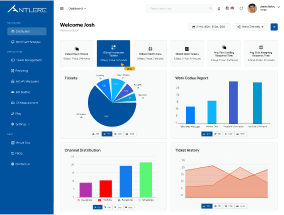The Strategic Roadmap: Mastering the SWOT Analysis for Business Growth
n the competitive business environment, it is not simply enough to have a good idea to survive, it is a matter of possessing crystal-clear insight into your place. Are you making decisions based on optimism, or reality? That essential reality check is precisely what a SWOT analysis provides.
This foundational strategic tool helps organizations, projects, or even specific products objectively assess the current situation.
By organizing information into four distinct quadrants, it helps you identify internal assets and liabilities, along with the external forces shaping your future.
Ready to move beyond guesswork and create a fact-based strategy? Let’s dive into how this powerful technique can map your path to growth.
What is the purpose of a SWOT analysis?

A SWOT analysis is mainly aimed at giving a holistic picture of strategic positioning of a company in the market.
It is the baseline of strategic planning as it will enable teams to evaluate their existing abilities and the competition they are in objectively.
The real value does not only rest in listing the factors but putting the information to use in spelling out actionable strategies: taking full advantage of strengths, reducing weaknesses, harnessing opportunities, and mitigating threats.
Simply put, it assists the teams in overcoming the emotionally based views and agreeing on a single, clear set of facts before investing in a new direction or initiative.
What are the four components of a SWOT analysis?
The strategic analysis is a SWOT analysis of the four distinct elements that constitute the strategic matrix: Strengths, Weaknesses, Opportunities and Threats. Such components are classified according to two aspects, namely, internal and external, and positive and negative aspects.
Category | Description | Nature (Internal/External) | Valence (Positive/Negative) |
Strengths | Internal benefits that are specific to your organization, product or team (e.g unique technology, good brand loyalty). | Internal | Positive |
Weaknesses | Organizational drawbacks or aspects in which the organization should do better to stay competitive (e.g., high turnover, old-fashioned technology, ineffective processes). | Internal | Negative |
Opportunities | External market trends or helpful practices available that could benefit your business (e.g., emerging consumer demands, regulatory changes, new market niches). | External | Positive |
Threats | External factors, competitors, or risk elements that could harm your success (e.g., economic instability, aggressive competitor pricing, shifting legal compliance). | External | Negative |
How to write a SWOT analysis?

Writing an effective SWOT analysis requires a structured, objective, and collaborative approach to ensure the final matrix is built on evidence rather than assumption.
Define Your Objective: Begin by defining the particular objective. Is it a new product introduction, a complete reorganization of a company or a marketing campaign? This concentration determines the involved and relevant factors.
Gather a Cross-Functional Team: Combine various points of view (e.g., Marketing, Sales, Operations, Finance). A brainstorming session helps to reduce individual bias and groupthink, which results in a more balanced evaluation of the competitive environment.
Collect Fact-Based Data: Make sure that each of the points that are listed in the four quadrants is supported by objective criteria or practical examples, including customer feedback, performance indicators (NPS, CSAT), or primary competition research. Do not make general assumptions.
Populate the Matrix: Fill in the four quadrants sequentially. Begin with the internal factors (Strengths and Weaknesses) which are nearest to home and proceed to the external factors (Opportunities and Threats).
Prioritize and Develop Strategy: Once the matrix is filled in the next important step will be prioritizing the most important factors. That brings directly to the subject of strategic planning where you specify what to do to align Strengths with Opportunities or work on Weaknesses revealed by Threats.
How does a SWOT analysis drive business strategy?

The real ability of a SWOT analysis is made possible when the descriptive results are converted into prescriptive strategy. This includes matching the quadrants to formulate action strategic paths:
SO–Strategies (Strengths-Opportunities): Identify how you can use your unique strengths to capitalize on current market opportunities. (Example: Using your superior technical team to develop a proprietary solution for an emerging consumer demand).
ST–Strategies (Strengths-Threats): Identify ways in which you can leverage your current capabilities to alleviate or fight perceived market threats. (Example: Take advantage of your strong brand loyalty to counter-act an aggressive pricing strategy on the part of a new competitor).
WO–Strategies (Weaknesses-Opportunities): Identify weaknesses that prevent you from pursuing a major opportunity and plan how to overcome them. (Example: Hiring staff or adopting new technology to address an inefficient process that is blocking entry into a profitable market).
WT–Strategies (Weaknesses-Threats): Plan defensive strategies to minimize weaknesses and avoid the most severe threats. (Example: Investing in a robust security audit to protect against a known industry cyber threat that targets weak internal systems).
SWOT analysis can be used in a wide range, improving not only project management (evaluating the resources in relation to project needs) but also performance evaluation (understanding which areas work and which have to be improved).
Conclusion
SWOT is the necessary strategic map for any successful business venture. It is a tool that transforms complex information into focal actions plans by systematically categorizing the internal and external forces in play.
Never allow your competitive environment to determine your future; rather apply the strengths of the SWOT matrix to examine your standing and take a constructive direction to success.









